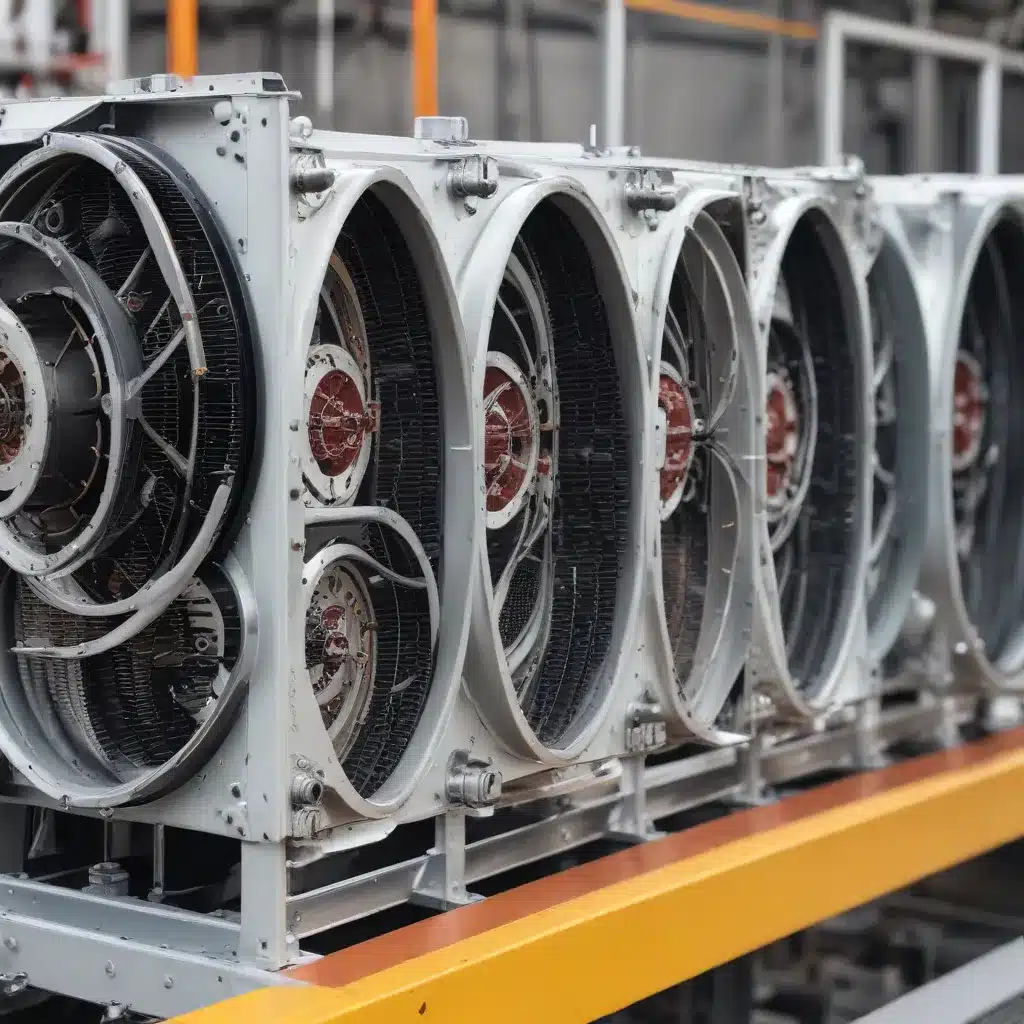
As a seasoned expert in the field of air-cooled heat exchangers, I’m thrilled to share my insights on how cutting-edge machine learning techniques can revolutionize the design, engineering, and optimization of these critical thermal management systems. Across a wide range of industries, from power generation to HVAC, air-cooled heat exchangers play a pivotal role in efficiently dissipating heat, ensuring optimal system performance, and minimizing energy consumption.
In this comprehensive article, we’ll delve into the transformative potential of machine learning-driven strategies to unlock new levels of air-cooled heat exchanger efficiency, reliability, and adaptability. From advanced modeling and simulation to predictive maintenance and real-time performance optimization, the integration of artificial intelligence and data-driven approaches is poised to redefine the future of this essential technology.
Unlocking the Power of Machine Learning in Air-Cooled Heat Exchanger Design
Traditionally, the design and optimization of air-cooled heat exchangers have relied heavily on empirical data, rule-of-thumb guidelines, and time-consuming trial-and-error processes. While these methods have served the industry well, they often fall short in capturing the complex, multidimensional relationships between design parameters, environmental conditions, and thermal performance.
Enter machine learning. By harnessing the power of advanced algorithms and vast datasets, engineers can now develop predictive models that can accurately forecast the behavior of air-cooled heat exchangers under a wide range of operating scenarios. These models can then be used to systematically explore the design space, identify optimal configurations, and fine-tune parameters for maximum efficiency and reliability.
One of the key advantages of machine learning-driven design is the ability to account for the intricate interplay between factors such as airflow patterns, heat transfer coefficients, material properties, and environmental conditions. By training neural networks or other machine learning models on comprehensive datasets, designers can uncover hidden relationships and patterns that would be nearly impossible to discern through traditional analytical methods.
For example, a machine learning model trained on historical data from a power plant’s air-cooled condenser system could accurately predict the impact of ambient temperature fluctuations, changes in fan speed, and fouling on the unit’s thermal performance. Armed with these insights, the design team can then explore a wide range of optimization scenarios, ranging from fan control algorithms to innovative tube and fin geometries, to maximize the system’s energy efficiency and reliability.
Leveraging Machine Learning for Predictive Maintenance and Performance Optimization
Beyond the design phase, machine learning also holds immense potential for enhancing the operational efficiency and maintenance strategies of air-cooled heat exchangers. By continuously monitoring real-time data from sensors and incorporating historical performance records, machine learning algorithms can identify patterns, detect anomalies, and forecast potential failures or performance degradation.
Predictive maintenance powered by machine learning can help air-cooled heat exchanger operators anticipate and address issues before they lead to costly downtime or catastrophic failures. For instance, by analyzing vibration data, acoustic signatures, and thermal profiles, machine learning models can detect the early stages of fouling, corrosion, or mechanical wear, enabling proactive maintenance and minimizing unplanned outages.
Moreover, machine learning-driven performance optimization can dynamically adjust operating parameters, such as fan speed, air damper settings, and coolant flow rates, to maintain peak efficiency under varying environmental conditions. By continuously learning from sensor data and optimizing in real-time, these intelligent control systems can ensure that air-cooled heat exchangers operate at their maximum potential, delivering substantial energy savings and cost reductions.
Integrating Machine Learning into Air-Cooled Heat Exchanger Lifecycle Management
To fully harness the transformative potential of machine learning in the air-cooled heat exchanger domain, it’s essential to adopt a holistic, lifecycle-based approach. This involves seamlessly integrating machine learning capabilities across the entire product development and operational stages, from initial design to ongoing maintenance and optimization.
Design and Engineering: As discussed earlier, machine learning-driven design strategies can significantly enhance the performance, reliability, and efficiency of air-cooled heat exchangers. By incorporating these techniques early in the development process, engineers can explore a wider design space, identify optimal configurations, and minimize the need for physical prototyping and testing.
Manufacturing and Deployment: Machine learning algorithms can also play a crucial role in quality control and predictive maintenance during the manufacturing and deployment phases. By analyzing sensor data and production records, these models can detect potential defects or issues, enabling proactive interventions and ensuring reliable, high-quality air-cooled heat exchangers are delivered to customers.
Operation and Maintenance: Throughout the operational lifespan of air-cooled heat exchangers, machine learning-powered predictive maintenance and performance optimization strategies can continuously monitor system health, forecast maintenance needs, and dynamically adjust operating parameters to maintain peak efficiency. This holistic approach helps maximize the operational lifetime of these critical assets while minimizing downtime and energy consumption.
Data-Driven Continuous Improvement: Finally, the wealth of data generated throughout the air-cooled heat exchanger lifecycle can be leveraged to drive ongoing improvements and innovations. By analyzing performance trends, maintenance records, and customer feedback, machine learning models can identify opportunities for design enhancements, process optimizations, and the development of next-generation technologies.
Conclusion: Embracing the Machine Learning Revolution in Air-Cooled Heat Exchanger Solutions
As the demand for efficient, reliable, and sustainable thermal management solutions continues to grow across industries, the integration of machine learning into air-cooled heat exchanger design, engineering, and operations is poised to be a game-changer. By harnessing the power of data-driven insights, predictive analytics, and adaptive control systems, air-cooled heat exchanger specialists can unlock new levels of performance, reliability, and energy efficiency.
At https://www.aircooledheatexchangers.net/, we are at the forefront of this revolutionary transformation, seamlessly blending our deep domain expertise with the latest advancements in machine learning and artificial intelligence. Whether you’re an engineer, plant manager, or sustainability advocate, we’re here to guide you through the exciting journey of optimizing air-cooled heat exchanger performance and unlocking a future of greater efficiency, reliability, and environmental stewardship.

